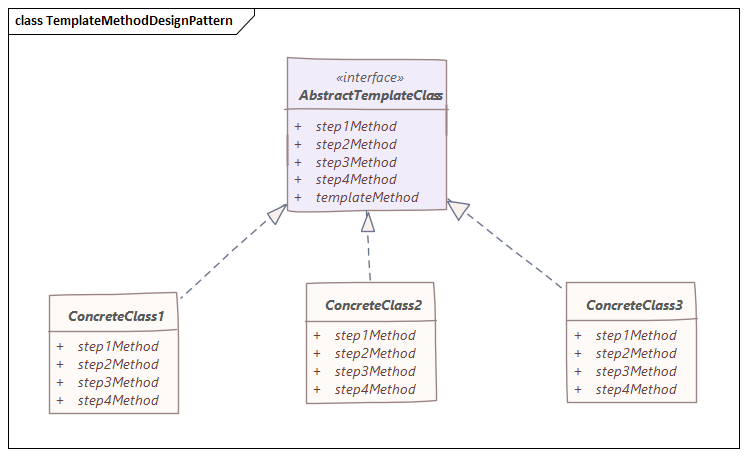Today, I will discuss another very useful design pattern named the Template Method Design Pattern.
Template Method Design Pattern
- The Template Method pattern is one of the behavioral design patterns identified by Gamma et al. in the book Design Patterns.
- The Template Method pattern provides a method in a super-class, usually an abstract super-class, and defines the skeleton of an operation in terms of several high-level steps.
- Generally, these steps are implemented by additional helper methods in the same class as the template method.
- The helper methods may be either created as an abstract method, for which sub-classes are required to provide concrete implementations, or hook methods, which have empty bodies in the super-class.
- The Template Method design pattern is used to define an algorithm as a skeleton of operations and leave the details to be implemented by the child classes.
- In this way of implementation, the overall structure and sequence of the algorithm are preserved by the parent class.
- The Template Method pattern defines the sequential steps to execute a multi-step algorithm. We can provide a default implementation as well.
- In the Template Method pattern, we define a preset structure method called template method which consists of steps.
- These steps can be created as an abstract method which will be implemented by its sub-classes.
- In the Template Method pattern, an abstract class exposes defined way(s)/template(s) to execute its methods.
- The template method uses and defines the sequence of steps to perform the algorithm.


